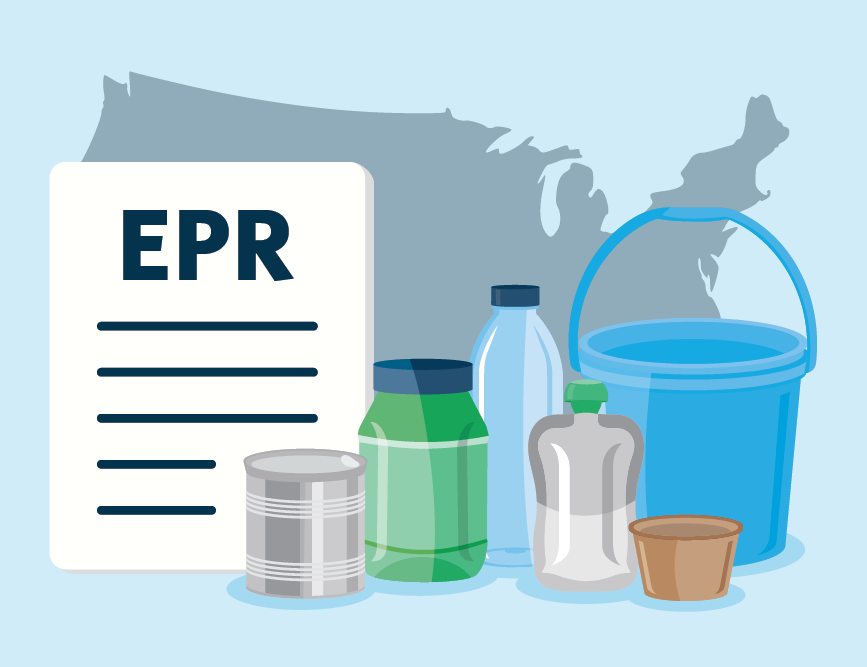How Extended Producer Responsibility impacts my packaging
Sustainability
October 24, 2025Reading time: 2 minutes

Producers and brands are facing a transformative shift in their packaging strategies thanks to Extended Producer Responsibility (EPR) laws. These policies are redefining who is responsible for packaging waste, and in turn, spurring innovation and operational changes across all industries. In this article, we’ll explore what EPR is, how it impacts your packaging, and how fee structures are developed under these new regulations.
What is Extended Producer Responsibility? Understanding EPR
Extended Producer Responsibility (EPR) is an environmental policy approach that shifts the responsibility for post-consumer waste from local governments to the producers. Under EPR, the identified producer is financially and operationally accountable for managing the lifecycle of their packaging—from design considerations to recycling and disposal fees.
This approach is ultimately designed to:
- Fund responsible collection and handling of packaging waste
- Improve access to recycling infrastructure
- Increase recycling and composting rates
- Decrease production and use of virgin materials
How does EPR impact my packaging?
EPR laws impose financial responsibilities on the producer for the lifecycle of their packaging. This means that every piece of packaging—whether it’s a metal can, a paperboard carton, or a plastic tub—will be subject to varying levels of fees based on its overall environmental impact, including but not limited to recyclability. That said, there are some exemptions, which can be found on the Sustainable Packaging Coalition's (SPC) covered products and exemptions mini resource.
While it's important to meet sustainability standards, from a design perspective packaging cannot compromise its primary purpose — protecting and preserving the quality of the product inside. This creates a need to balance functionality and environmental responsibility.
Will my brand be charged EPR fees for its packaging?
The short answer is yes — most likely. EPR laws typically assess fees based on a variety of factors like weight, material type, and package format.
Eco-modulation is another variable that may factor into state-specific EPR fees. Eco-modulation takes into account other factors beyond material and weight such as recyclability, reuse, compostability, and post-consumer recycled content.
Ultimately, these fee assessments aim to incentivize brands to modify their packaging designs in favor of more sustainable alternatives, in turn lowering their financial liabilities. These fees will become an integral part of the cost structure, so it’s important to have a good understanding of your brand’s cost implications.
The SPC’s mini resource on EPR and eco-modulation provides an excellent overview of some of the EPR programs out there.
How do EPR fees for packaging formats compare?
When it comes to specific material types, fee structures under EPR vary because states have drafted different program plans. That said, there are some consistencies as states are learning from each other and adopting laws that share similar core principles.
In general, it comes down to the assigned material fee in each state. The total EPR fee is based on how many units you sell, the weight of each package, and the material composition of the package less any eco-modulation benefits. Under the current EPR environment, what may be true in one state may not be true in another. For states with published material fees, understanding your packaging fee can be simple, but eco-modulation poses a bit of a wild card in terms of incentive value and enforcement.
Conclusion
Extended Producer Responsibility laws are fundamentally reshaping the packaging landscape. From imposing fee structures and compliance requirements to spurring innovation in sustainable materials, EPR presents both challenges and opportunities. For each participant in the value chain, understanding these dynamics is key to adapting packaging designs, avoiding regulatory pitfalls, and even leveraging sustainability as a competitive advantage.
Not sure where to start? That’s okay. We have a team of packaging consultants ready to provide you with expert advice and recommendations tailored to your business. Schedule a meeting or visit Amcor's sustainability home to learn more about our commitment to sustainable packaging solutions.
